| S |
|
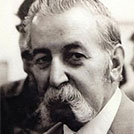 | Atta Sabri was born in Kirkuk, Iraq in 1913. He completed his early education at the Dar al-Mualimin or the "House of Teachers" in Baghdad. He then studied at the Accademia di Belle Arti in Rome and completed his art education at the Goldsmiths College and the Slade School in London. After receiving his BFA, he held a professorship at the Institute of Fine Art in Baghdad. Sabri was a founding member and fellow of the Society of the Friends of Art and was active in the Society of Iraqi Plastic Artists. The painter was showcased at the Iraqi artist pavilion during the 1931 Industrial and Agricultural Fair in Baghdad. He then contributed to several exhibitions at the National Museum of Modern Art in Baghdad. A number of Atta Sabri's pieces were looted from this institution after the 2003 US-led invasion of Iraq. Sabri died on 3 January 1987 in Baghdad, Iraq.
Read more |
|
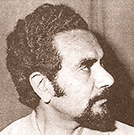 | Gamal el-Sigini, born on 7 January 1917 in Cairo, Egypt, was a prominent sculptor and medalist, as well as the founder of a Group called "The Voice of the Artist" (Sawt al-Fannān). He studied at the School of Fine-Arts in Cairo where he graduated in 1938. He was a member of the Egyptian "Group of Modern Art" and became the head of the Sculpture Department of the Faculty of Fine Arts in Alexandria in 1958. He was named director of the Sculpture Department at the School of Fine Arts in Cairo in 1964. El-Sigini represented powerful patriotic subjects by using bronze, stone, copper, wood and leather. He also created medals for various official events. El-Sigini died on 19 November 1977 in Barcelona, Spain.
Read more |
|
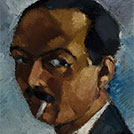 | Georges Sabbagh, born on 18 August 1887 in Alexandria, Egypt, was an Egyptian painter of Syro-Lebanese origin. He joined the Académie Ranson in Paris in 1910, where studied under the painters Félix Vallotton and Maurice Denis, who had a significant influence on his work. During the First World War, he enrolled in the British army and on his return to France he married the art historian and activist Agnès Humbert. Throughout his career, Sabbagh traveled regularly to Egypt. He belonged to the École de Paris and while his work was influenced by the nabis, the cubists and the fauves, he was in search of a new form of realism. Sabbagh died on 9 December 1951 in Paris, France.
Read more |
|
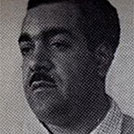 | Ismail al-Shaikhly was born in Baghdad, Iraq in 1924. Al-Shaikhly was educated at the Institute of Fine Art in Baghdad and was a member of the first graduating class. He then became its first alumnus to study abroad, attending the Ècole Nationale Supérieure des Beaux-Arts in Paris. Upon returning to Baghdad, al-Shaikhly was an influential member of the Pioneers Group, an artist society founded by Faiq Hassan. He later became the group's leader. Additionally, Al-Shaikhly was a founding member of the Society of Iraqi Plastic Artists and joined the Iraqi Artist Society. He also held the position of director general of the Directorate of Plastic Arts in Baghdad. Al-Shaikhly was a painter whose mature works demonstrate an abstract style, whereas his earlier canvases tended to be more representational. His works have been displayed around the world and in almost every Arab capital. Al-Shaikhlydied in 24 January 2002 in Baghdad, Iraq.
Read more |
|
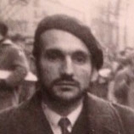 | Shakir Hassan Al Said, born in 1925 in Samawah, Iraq, was a key figure in the modern art movement in Iraq and a forerunner of art historical and theoretical writing in the region. He studied social sciences at Baghdad's Higher Institute of Teachers, and started a career as a teacher before he turned to art. He then studied at the Institute of Fine Arts in Baghdad and in Paris. After an initial phase of figurative painting, he turned to abstract art. He is especially known for his interest in Sufism and his use of Arabic letters in his wall paintings. Closer in his rendering of Arabic letters to their appearance in everyday writing than to Islamic calligraphy, these paintings show popular expressions in the form of mural inscriptions, graffiti, and signs scribbled on a city wall. Shakir Hassan Al Said was a founding member of the Baghdad Group for Modern Art and the One Dimension Group. He died in Baghdad in 2004.
Read more |
|
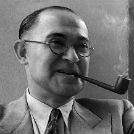 | The Alexandrian painter Mahmoud Said is considered one of the pioneers of Egyptian modern painting. Born in 1897 to an aristocratic family with ties to royalty, the teenage Said studied first with local Italian artists, learning to paint in an impressionist style. He graduated from the Cairo School of Law in 1918, and in 1920, he studied drawing at the private Académie Julian in Paris. Though he worked as a lawyer at the Tribunaux Mixtes (Mixed Courts) until 1949, Said painted on weekends, maintaining a distinctive painterly style through nearly five decades. With smooth contours and rich colors, the artworks present perplexing images of nude Egyptian women, stylized Lebanese landscapes, and glamorous Alexandrian aristocrats. Said’s dualistic depiction of erotic nudes and sedate, clothed elites represents the modern Egyptian art’s complex response to colonialism and nationalism. Art critics lauded Said during his lifetime as a master painter and his works were exhibited in widely in Egypt and at international exhibitions like the Venice Biennial. He died in Alexandria in 1964, and his family villa now houses the preeminent collection of his artwork as the Mahmoud Said Museum.
Read more |
|
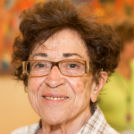 | Gazbia Sirry is a prominent artist who belongs to what is termed as "the second generation" of artists to emerge in the post-war period. She came to prominence in the Nasser Era, but responded to political and artistic shifts in Egypt throughout her sixty-year career. She is well respected for her richly colored canvases as well as her savvy perseverance in the Cairo art world. She received her training at the Cairo School of Arts Education, and her early paintings depict strong, imposing female figures of all social classes. In 1967, figural representations vanished abruptly from her work, perhaps due to the trauma of the Six-Day War, her brief imprisonment by Egyptian government, or her experience with abstract Expressionism in California. Throughout the 1970s, Sirry painted abstract "cityscapes" – complex grids that evoke urban skylines simply but are primarily exercises in color and shape. Sirry continues making art to this day, living and working in the affluent neighborhood of Zamalek in Cairo.
Read more |
